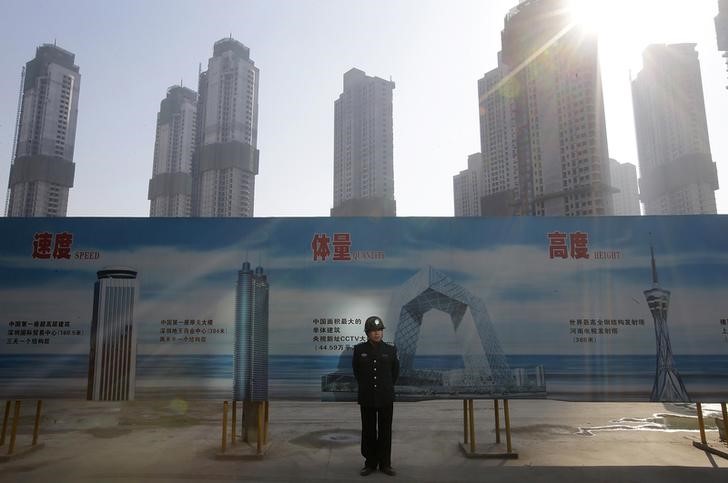BEIJING (Reuters) - Growth in China's fixed-asset investment and retail sales cooled unexpectedly in May, but factory output growth was steady, doing little to clear up uncertainty over prospects for the world's second-largest economy.
Factory output grew 6 percent in May from a year earlier, the National Bureau of Statistics (NBS) said on Monday. Economists polled by Reuters had expected growth to ease slightly to 5.9 percent from 6 percent in April.
Analysts believe industrial output has been supported by a government infrastructure spending spree and a further recovery in the property market.
Fixed-asset investment growth fell to 9.6 percent in January-May from the same period a year earlier, missing market expectations of 10.5 percent, which would have been unchanged from Jan-April.
Fixed investment by private firms continued to slow. Investment by private firms rose 3.9 percent year-on-year in January-May, compared to 5.2 percent growth in the Jan-April.
China's real estate investment rose 7.0 percent in the first five months of 2016 from the same period a year earlier, while property sales by area increased 33.2 percent.
Retail sales growth in May, which captures both private and government purchasing, slowed to 10.0 percent on-year, although the decline was only marginal. Analysts had forecast sales would be unchanged from April at 10.1 percent.
China's May power generation was unchanged from April, with January up 0.9 percent.
Data on May trade and inflation last week also gave investors mixed signals on whether the economy is merely steadying or slowly recovering.
With the economy not yet on firm footing, analysts believe the government and the central bank will have to stick to their stimulative policies and possibly take further measures to ensure momentum does not wane.
Trade data showed a further drop in exports but the smallest decline in imports in more than a year, suggesting domestic demand was picking up as the government goes on an infrastructure spree and housing starts continue to grow.
Price data showed consumer inflation cooled, but production price deflation eased markedly, reducing some of the strains on Chinese companies which are battling shrinking profit margins.
Government pledges to cut excess industrial capacity and restructure bloated state-owned enterprises are a major wild card, posing risks to near-term growth and the financial system. But most economists expect Beijing to move slowly, fearing social instability if millions of people are suddenly thrown out of work.
